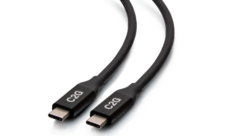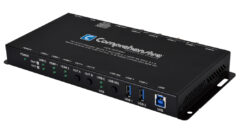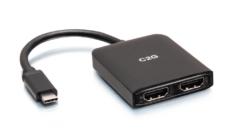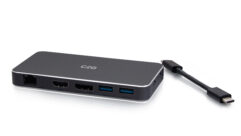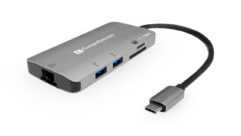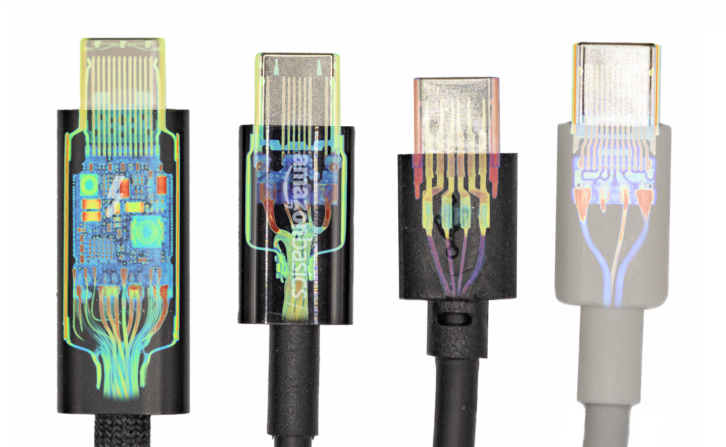
Apple’s much-celebrated embracing of USB-C connectivity included the announcement of a $130 Thunderbolt 4 Pro cable, leaving many to wonder what could possibly make a USB-C cable worth so much money. To get to the bottom of the question, industrial CT scanner manufacturer Lumafield put the expensive Apple cable to the test by scanning it alongside USB-C cables priced at $10, $5.59 and $3.89, to see if there’s any notable difference at these price points.
Intel introduces Thunderbolt 5, tripling top speeds of Thunderbolt 4
When scanned by Lumafield’s Neptune Industrial X-Ray CT Scanner, Apple’s $130 Thunderbolt Pro cable lights up with carefully crafted components. One would hope this to be the case, as the cable sporting data transmission at 40GB/s with 100W of power. The cable’s separately-mounted 24 pins are easily visible, and Lumafield says they are seen running through “a forest of blind and buried vias.” The construction of the cable sees the inner components encased in hard plastic, adequately shielded, with the single-piece strain joining the connector with an eight-sided crimp. Lumafield deems the cable “a stunning piece of precision engineering.”
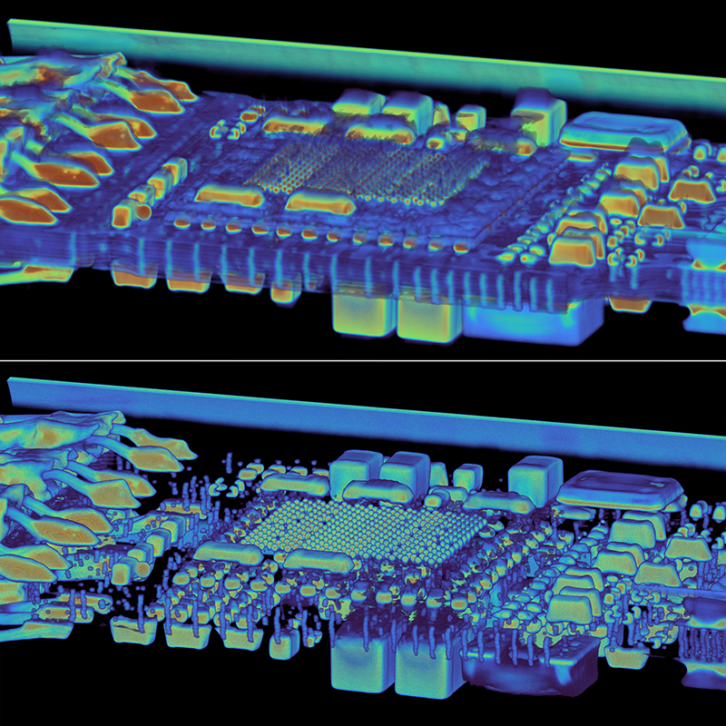
The other cables, predictably, don’t hold up so well. But is the difference enough to justify such an exorbitant difference in price?
The $10 cable, and Amazon Basics model, is rated for 480 Mb/s with 60W of power. Under the scan, half the amount of pins of the Apple cable can be seen, with the majority of them not separately mounted. Lumafield notes that there is far less strain relief, though there is suitable shielding and a fully grounded shell. All in all, Lumafield deems the construction of the cable to be passable for its rating.
The other two cables, which come in around $6 and $4 dollars, see a notable drop-off. These see the pins connected straight into wire, with no printed circuit board between. No shielding, no grounding, no reinforcement, and rubber strain relief result in cables that Lumafield says can’t support the speeds they are rated for.
Is Apple’s cable price worth it? Lumafield summarizes by saying “we buy cables that meet our needs.” There is a clear difference among the cables in both construction and performance, but what a cable’s worth is is defined by the needs of the user.


